Video
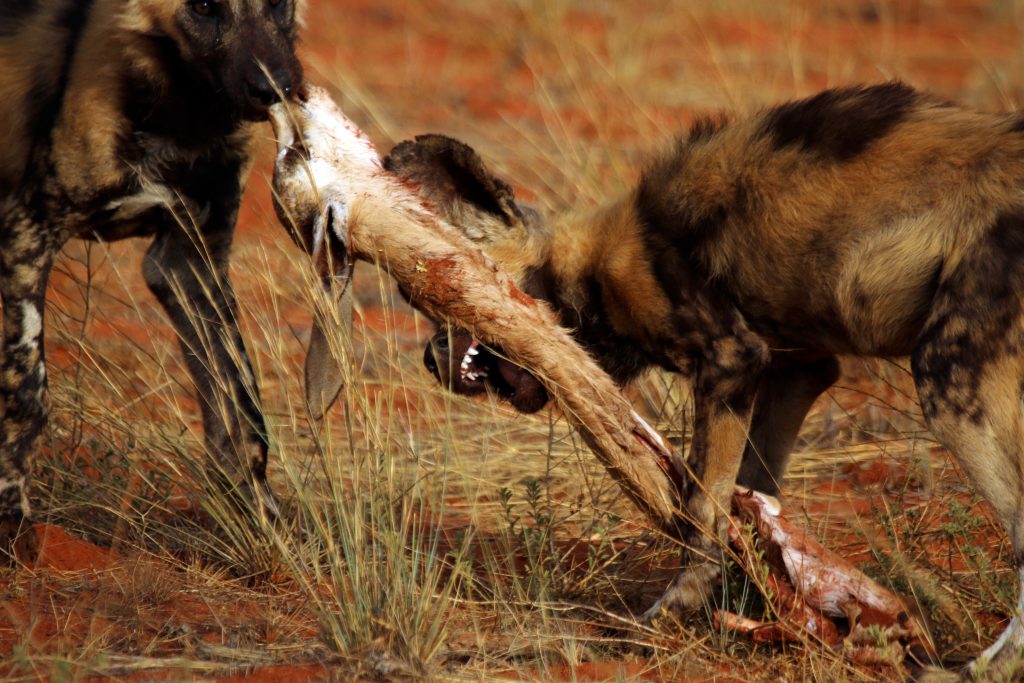
With their arresting size, cunning, and athleticism, Africa’s big cats—like lions, leopards, and cheetahs—get plenty of attention as avatars of carnivory. But the swiftest death on the sun-baked savanna comes from an animal that doesn’t look all that different from the lovable mutt snoring on your couch.
African wild dogs (Lycaon pictus) are among the most impressive carnivores on the planet, armed with enough exceptional weaponry and hunting prowess to humble even the most famous predators.
They are the largest canids (wolves, dogs, and their relatives) in Africa, being roughly the size and heft of a particularly lanky Weimaraner. The species once ranged throughout sub-Saharan Africa’s grasslands and woodlands, but the dogs are now limited to pockets mostly in southern and eastern Africa.
Also known as “African hunting dogs” or fittingly, “African painted dogs,” they are immediately recognizable by their unique, bristly coat, which is a seemingly random patchwork of black, white, brown, yellow, and orange blotches, giving the same aesthetic effect as a dark garment splashed with bleach. Their strange pelage, coupled with their huge, satellite dish ears, out them as wholly distinct from any other canid.
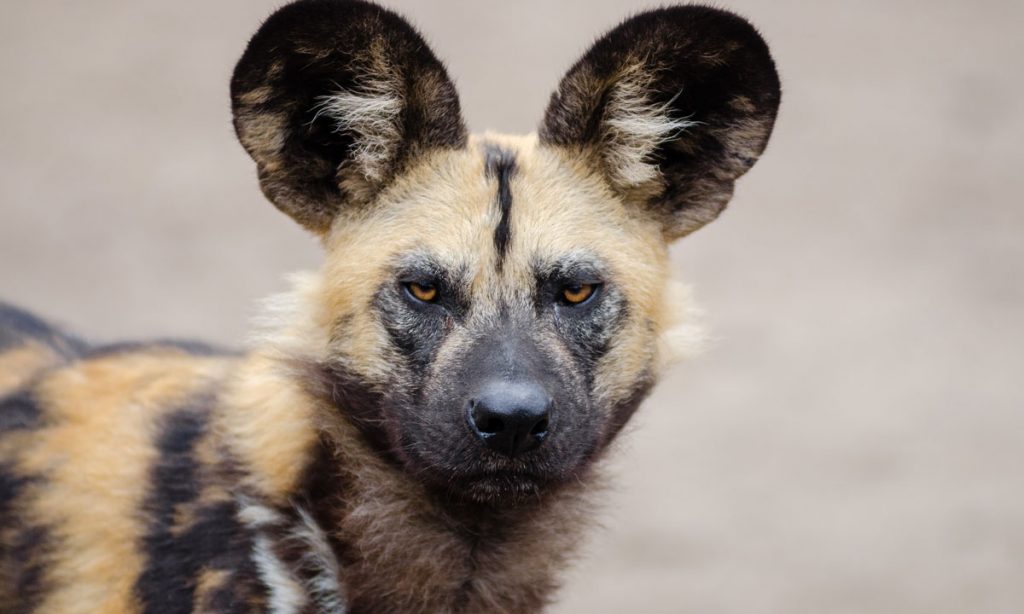
But the uniqueness of the African wild dog’s biology doesn’t stop there. In fact, many of its more unusual traits are actually key adaptations for targeting and slaying prey as efficiently as possible. For example, painted dogs don’t have a dewclaw—the fifth “thumb” toe on other canids that doesn’t touch the ground—and their middle two toe pads are often fused. It’s thought that these features are adaptations for a life spent continually running down prey, necessitating maximum streamlining and reduction of limb structures that might hinder speed or endurance.
African wild dogs are sometimes called “painted wolves”, but when it comes to their skulls and teeth, wolves and wild dogs couldn’t be more different. Compared to wolves and coyotes, wild dogs’ skulls are short and broad, imparting an incredibly burly bite force, stronger than any living carnivoran (that includes everything from tigers to hyenas to grizzly bears).
Those powerful jaws are studded with a remarkable set of teeth. Painted dogs are actually missing their last molars, but have giant, bladed premolars, which have evolved to easily rend flesh, allowing for meals to be snarfed down quicker. These teeth—far more specialized than those even in gray wolves—point to the painted dogs’ “hypercarnivorous” diet, which unlike many of its closest canid relatives, consists almost entirely of meat.
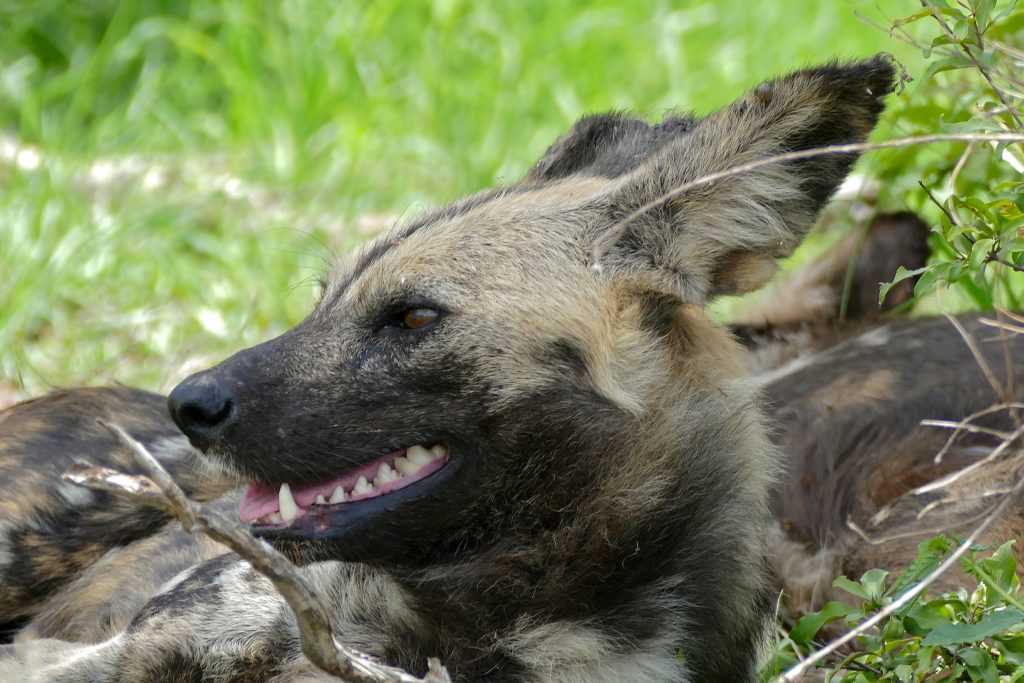
When we think of “pack hunters”, it’s tempting to automatically envision wolves or lions. But neither of these species can hold a candle to the well-oiled machine that is an African wild dog pack. Wild dogs are extremely social animals, living in groups of a few to about two dozen individuals their whole lives. These packs are incredibly close-knit, with a less rigid hierarchy than wolf packs. The egalitarianism even extends to pups, which often get to feed first at a kill (an unusual system for a pack-hunting canid). Painted dogs also use sophisticated intra-pack communication, even “voting” on pack movement decisions by sneezing.
All of this group cohesion comes together when the dogs go on the hunt. For all their fame as team players, lions and wolves come nowhere near the successful kill rate of wild dogs. In Yellowstone National Park, for example, wolves only take down an elk in one-fifth of their total attempts. A pride of lions successfully kill their prey about 30% of the time or less. But if you’re an herbivore that’s been selected by a contingent of wild dogs, you’re not likely to make it out alive. Hunting success in wild dogs can reach 90% or more.
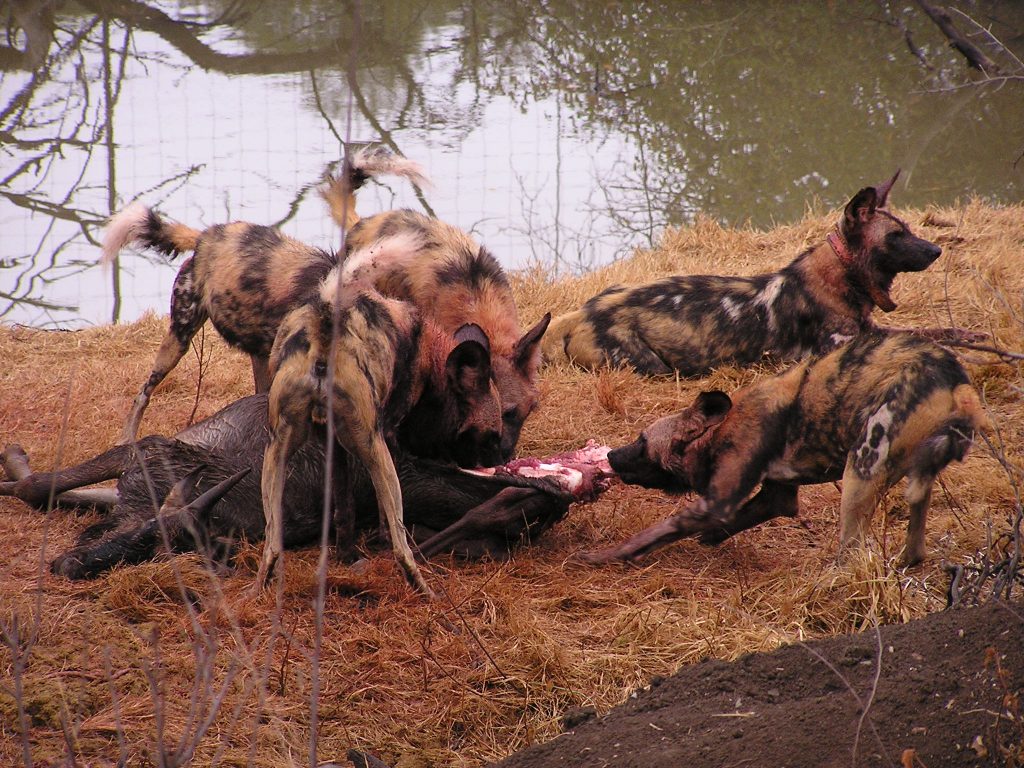
Much of this hunting success comes from the dogs’ ability to tailor their hunting strategy to certain kinds of prey. Large prey like wildebeest get charged by the group to flush out and isolate weak or slow individuals, which are then chased and nipped at until they can be dragged to the dirt. Antelope are a bit more nimble, so the dogs seamlessly employ an encircling pattern, cutting off all routes of escape. Wild dogs can also kill and eat well-defended or dangerous animals like warthogs or porcupines, usually by a solo dog surgically dispatching them.
Once the pack has an animal pinned, it’s not long until it’s all over—unlike with the big cats that wild dogs share their habitat with. Lions and cheetahs go for the throat to crush the windpipe and asphyxiate the animal. This can be a drawn out, agonizing and violent process for the hapless prey animal. But painted dogs cut right to the chase, with the pack tearing into their prize as soon as they can get teeth on hide.
Death by painted dog pack is horrifically graphic, with many animals being very much alive while they are being disemboweled and eaten. On the flip side, this method makes their demise mercifully rapid. The speed at which a painted dog can strip a carcass of meat and organs is legendary; there are accounts of Thomson’s gazelles, which weigh about 50 pounds, being skeletonized within 15 minutes. This speed eating is understandable, since it doesn’t take long for much larger hyenas or lions to swoop in and bully the pack away from their catch.
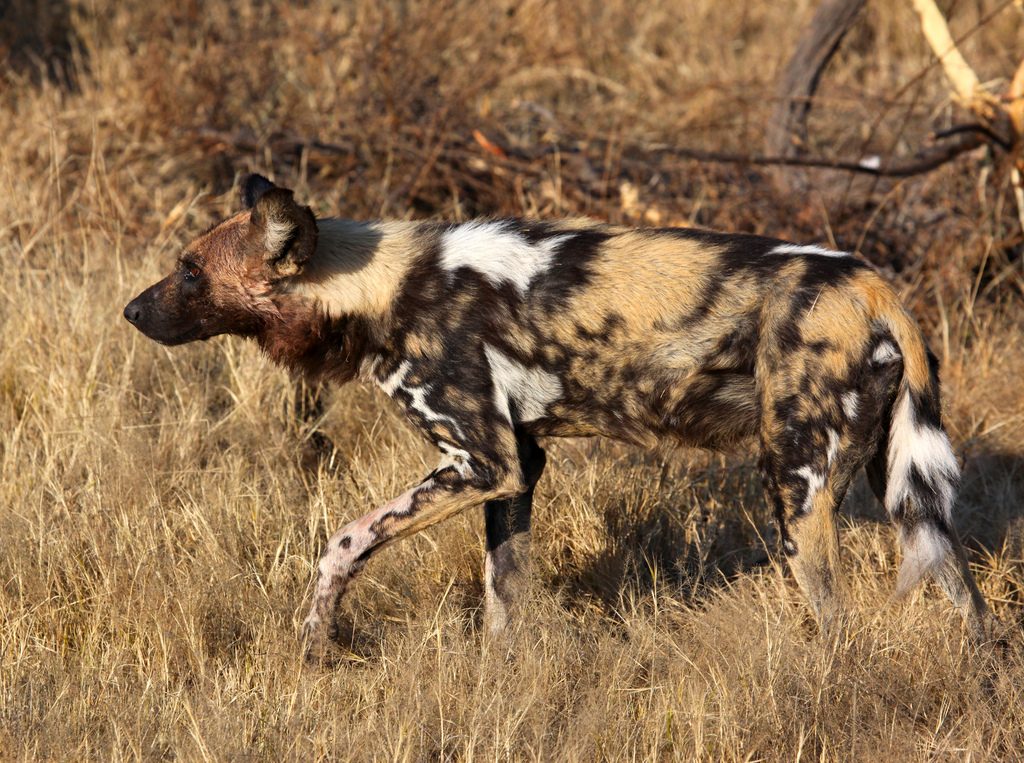
Larger carnivores are a constant threat even to the most efficient hunter on the savanna, but are not nearly as threatening as humans. Painted dogs are now endangered, their hunting grounds fragmented by agricultural expansion and conscious extermination by those that see them as potentially dangerous vermin. There may only be a few thousand adult animals in the wild, and that number is, sadly, declining every year.